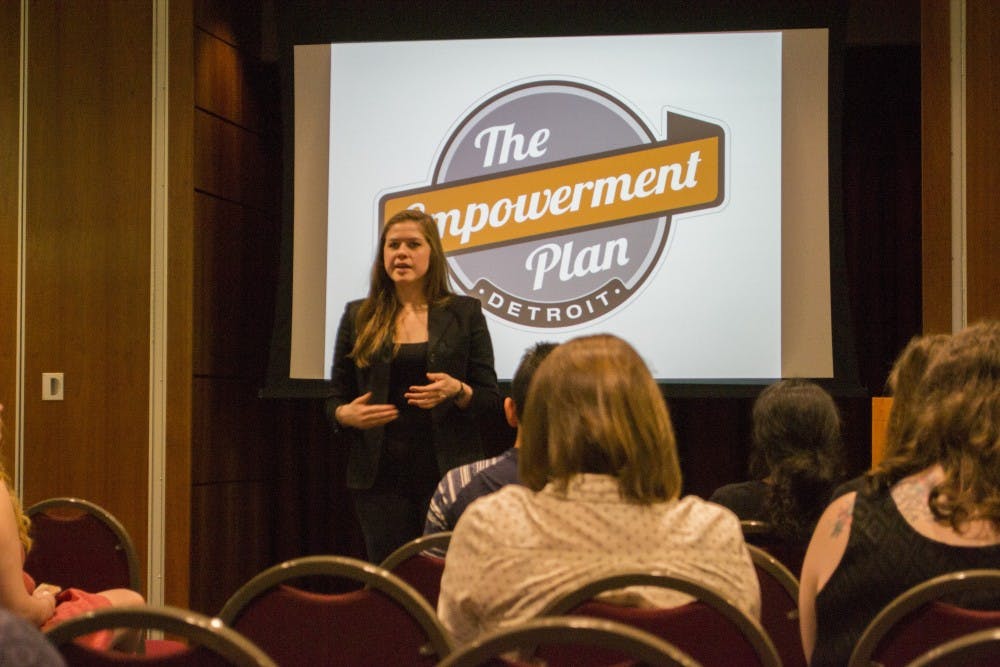While Veronika Scott is used to being referred to as the “crazy coat lady” because of the viral fame she has gained for creating coats that double as sleeping bags for the homeless, students learned at her lecture for Women's History Month that The Empowerment Plan embodies a deeper goal to enable homeless individuals.
The idea for the Detroit-based non-profit started as a class project to design something for a real need. As a 20-year-old product design student, Scott discovered that there are 20,000 homeless individuals in the city, meaning that one in 42 people is homeless. Only 1,600 beds were available to them on any given night.
Scott, whose parents struggled with unemployment and addictions, started her project by visiting one of the roughest homeless shelters in Detroit, where she talked to the residents and listened to what they needed.
She learned that they didn’t need coats. They needed jobs.
“What you realize in a lot of these shelters and a lot of these areas is that you give away a lot of what makes you feel like human," Scott said. "It was all about pride and independence and they wanted to take care of themselves and they wanted to be able to provide that for themselves ... I wanted to create something that didn’t feel like somebody else’s trash."
She made a prototype, wrote a business plan, tried to find funding and faced doubt and discouragement from professors and peers. She ended up getting the money and materials she needed from Mark Valade, CEO of Carhartt.
Scott became the youngest person ever to receive the JFK New Frontier Award in 2012, was recognized in Forbes 2015 "30 under 30" social entrepreneurs and was recently named a CNN Hero. Students in the audience could relate to the doubt Scott faced because of their mutual age and gender in the business world.
Second-year exercise science student Makenna Carella was inspired by the humble beginnings of Scott's journey.
“It wasn’t this business plan, it was more like this cool idea that a lot of people liked and supported from the actual population that’s going to need the coats,” Carella said.
The organization has since made over 15,000 coats in 30 different states. More importantly, many of their employees are previously homeless people from local shelters. They became full-time seamstresses in order to earn a stable income and find secure housing.
“This is not a group of people that are weak or stupid or slow or whatever you think it means to be homeless," Scott said. "We get to change the perception of what it means to be stuck and trapped in poverty and what that actually looks like."

